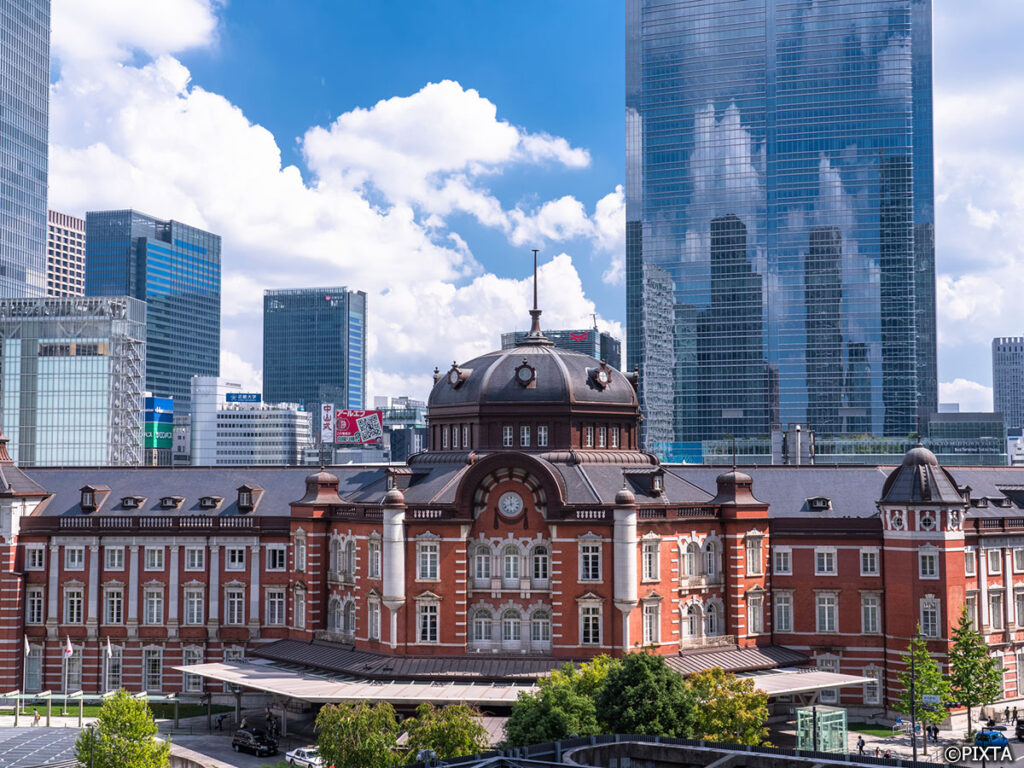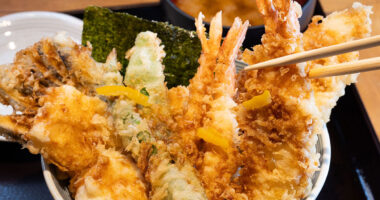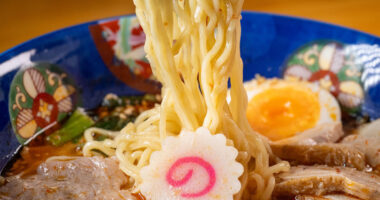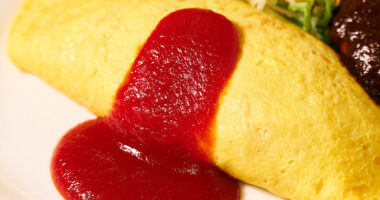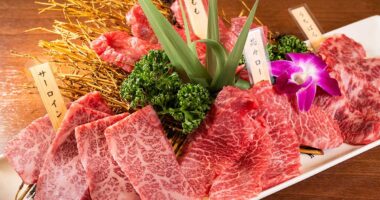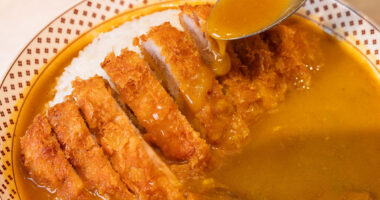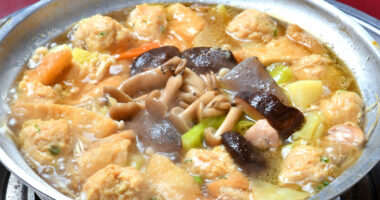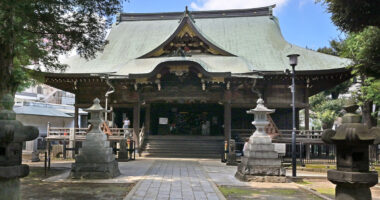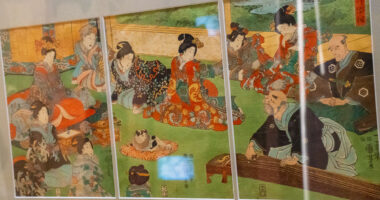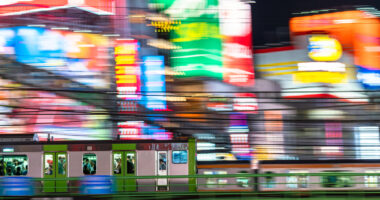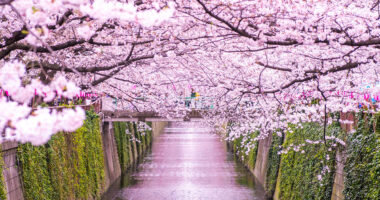Two of Tokyo’s most historically and economically significant neighborhoods, 日本橋 Nihonbashi and 丸の内 Marunouchi present a fascinating juxtaposition of tradition and modernity. Nihonbashi, literally translated as “Japan Bridge,” is a historic district that has been Tokyo’s commercial heart since the Edo period. The iconic bridge that gave the district its name was once the starting point of five major highways spanning Japan. On the other hand, Marunouchi, which means “within the circle”, a reference to its location within the outer moat of the Imperial Palace, stands as Tokyo’s modern financial district, bustling with international corporations, high-end hotels, and upscale shopping centers. Both neighborhoods, while contrasting, offer visitors an immersive insight into Tokyo’s past and present.
Access
Nihonbashi and Marunouchi, nestled in Tokyo’s central region, boast excellent connectivity, ensuring seamless access for visitors. The most convenient way to reach Nihonbashi is via the Nihonbashi Station (G11, A13, T10) that is served by the Tokyo Metro Ginza Line, Tozai Line, and the Toei Asakusa Line. On the other hand, Tokyo Station (M17, T09, Y18) located in Marunouchi is a major hub served by several subway lines and JR East lines, including the Yamanote Line, Chuo Line, and Keihin-Tohoku Line. These stations are less than a 5-minute walk from each other, making it easy for visitors to explore both neighborhoods in one day.
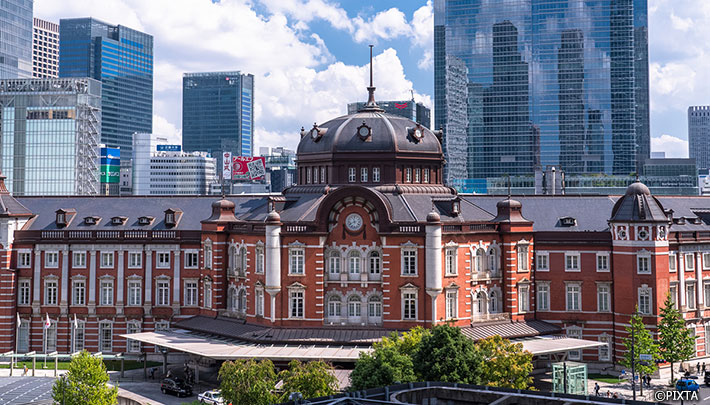
The iconic and photogenic Tokyo Station building
Food And Drink
A gastronomical journey through Nihonbashi and Marunouchi presents an array of impressive dining options. From Japanese cuisine to innovative international gastronomy, the culinary scene here caters to all palates. Yet it’s the traditional Japanese cuisine where these neighborhoods truly excel, boasting a number of renowned, time-honored establishments peppered throughout the area.
Japanese Cuisine: In both neighborhoods, a plethora of restaurants excel in various Japanese cuisine styles. From soba noodles and tempura to sukiyaki, chicken, and seafood, visitors can embark on an unforgettable culinary journey. Moreover, the neighborhoods are known for their prevalence of time-honored establishments, some of them in existence since the Edo Period.
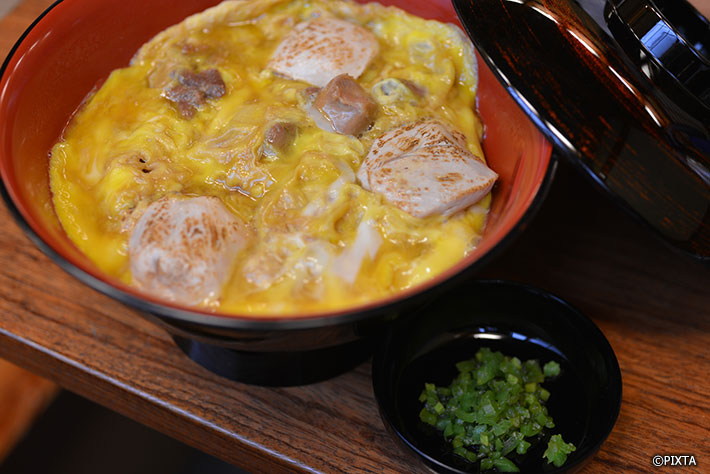
The famous 親子丼 oyakodon chicken and egg on rice at 玉ひで Tamahide in Nihonbashi (closed for renovations until Fall 2024)
懐石 kaiseki: The art of kaiseki, a traditional multi-course Japanese meal, is well represented in the area. Kaiseki restaurants here offer an exceptional dining experience, with chefs carefully balancing taste, texture, appearance, and colors across a series of dishes. With a focus on seasonal and local ingredients, a kaiseki meal also provides a snapshot of Japan’s seasons.
Sushi: Nihonbashi and Marunouchi are a haven for sushi enthusiasts. Numerous sushi bars dot the neighborhoods, ranging from casual conveyor belt sushi joints to upscale establishments where sushi masters craft each piece with precision and care.
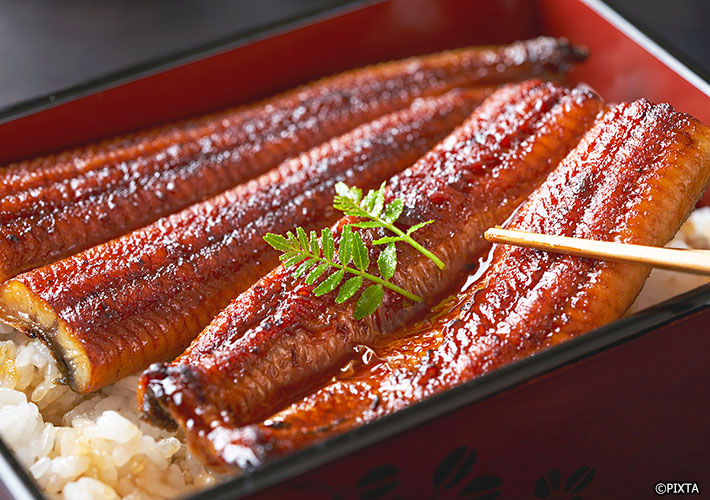
Grilled and seasoned frehswater eel on rice in a lacquer box.
鰻 unagi and 穴子 anago Fresh and saltwater eel: For an exquisite Japanese culinary experience, sampling unagi and anago dishes is highly recommended. Several specialist restaurants, mostly in the Nihonbashi area, serve succulent grilled eel, often over a bed of steamed rice, and usually served on rice in a lacquer box or a bowl. There’s even a restaurant specializing in grilled anago, which is rather unusual.
Shopping
Nihonbashi
Historic Department Stores: Nihonbashi is home to 三越 Mitsukoshi and 高島屋 Takashimaya, two of Japan’s oldest and most prestigious department stores. These grand buildings offer a diverse array of products, including high-end fashion, traditional crafts, and specialty foods. The basement food halls, or depachika, are especially impressive, with a vast selection of beautifully packaged foods and sweets, perfect for gifts or a gourmet picnic.
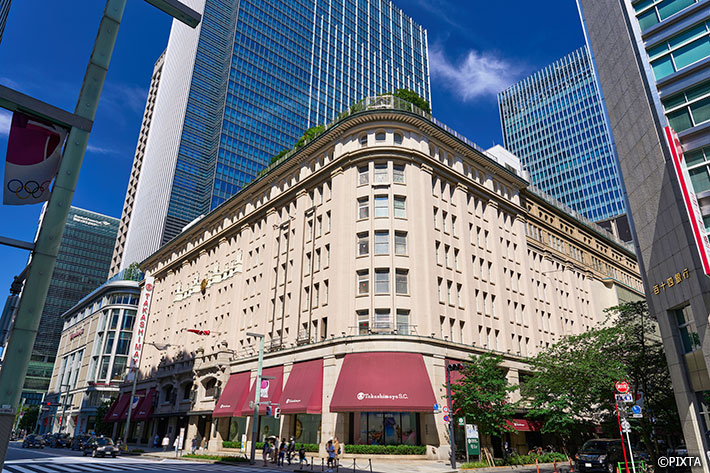
The flagship Takashimaya Department Store in Nihonbashi.
COREDO Shopping Complexes: The COREDO Muromachi and COREDO Nihonbashi shopping complexes are recent additions to the district, marrying the charm of old Nihonbashi with contemporary shopping experiences. These complexes host a variety of stores, from fashion to souvenirs, alongside a selection of restaurants where you can savor local and international cuisine.
Artisan Shops: This area is renowned for its traditional Japanese craft stores. You can find shops selling handmade washi paper, lacquerware, calligraphy brushes, traditional sweets, and more. These shops provide a unique opportunity to pick up souvenirs that capture Japan’s traditional aesthetics.
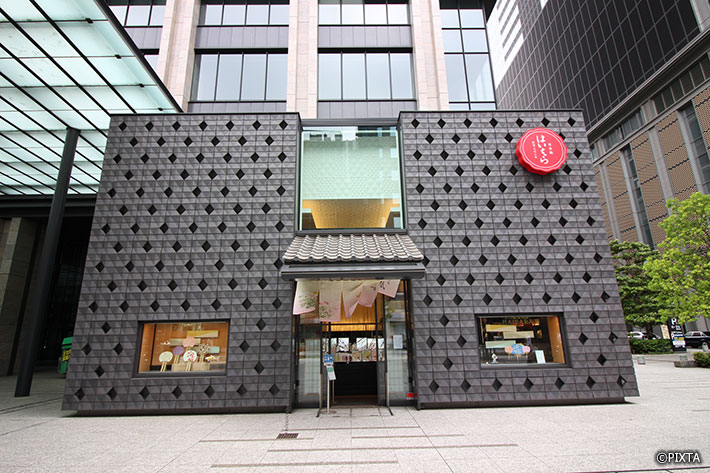
The new flagship store of 榛原 Haibara, a paper goods maker established in 1806
Marunouchi
Modern Shopping Complexes: Shopping in Marunouchi is a distinctly modern experience. High-end shopping complexes such as the Marunouchi Building and Shin-Marunouchi Building house a plethora of international luxury brands and stylish homeware stores. With a wide selection of clothing, accessories, and lifestyle goods, shoppers are sure to find something to their taste.
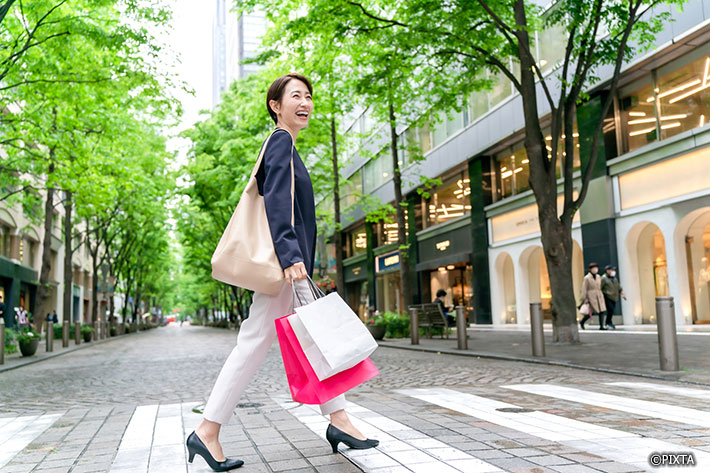
Enjoying a day of shopping in Marunouchi
Tokyo Station: Tokyo Station is more than a transport hub—it’s also a shopping and gourmet paradise. From the famed Tokyo Banana sponge cake and unique KitKat flavors found on Character Street, to a dizzying array of delicious 駅弁 ekiben boxed meals, there’s a delightful array of choices for food lovers and souvenir hunters. In addition, a range of shops selling everything from wine and sake to lifestyle goods offers ample opportunities for a memorable retail experience.
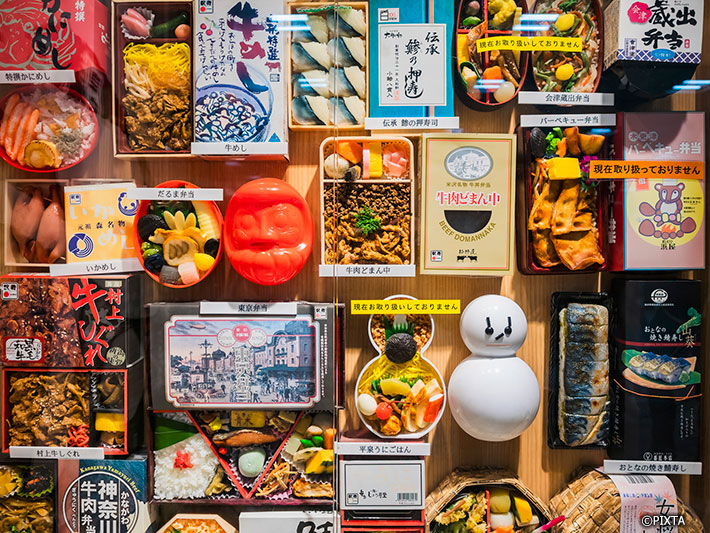
An assortment of ekiben lunches on display inside Tokyo Station.
Tokyo Torch District: Adjacent to Tokyo Station, the newly developed Tokyo Torch district is fast becoming a popular destination. Set to eventually house Japan’s tallest building, the Torch Tower, scheduled to open in 2027, this district offers a glimpse of Tokyo’s future. The already operational Tokiwabashi Building presents a selection of shops and restaurants for visitors to explore, while the Tokyo Torch Market, held every Friday in Tokyo Torch Park, features regional foods from around Japan, offering a unique gastronomical journey without ever leaving the city.
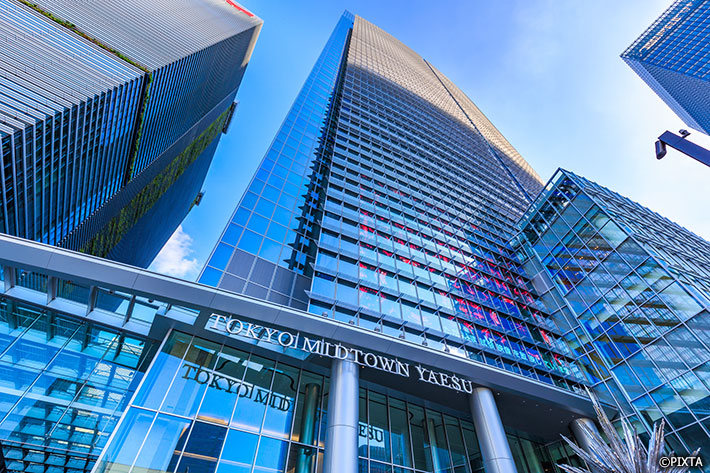
The new Tokyo Midtown Yaesu near Tokyo Station.
Tokyo Midtown Yaesu: The latest addition to the Marunouchi area, Tokyo Midtown Yaesu opened on March 10, 2023. A shopper’s haven, the 45-story mixed-use development complex offers an array of stores that cater to various tastes and interests. Visitors can not only explore Japanese luxury brands that specialize in clothing, loungewear, bags, and accessories, all designed with a blend of traditional craftsmanship and modern aesthetics but also Japanese lifestyle brands including traditional regional crafts, glassware, and lightweight travel products. Numerous dining options are also available.
Sightseeing And Activities
Nihonbashi
日本橋 Nihonbashi Bridge: Serving as the historical and geographical center of Tokyo, the Nihonbashi Bridge is a must-visit. It’s the “zero milestone” for Japan’s national highway network, making it a fascinating site for history buffs.
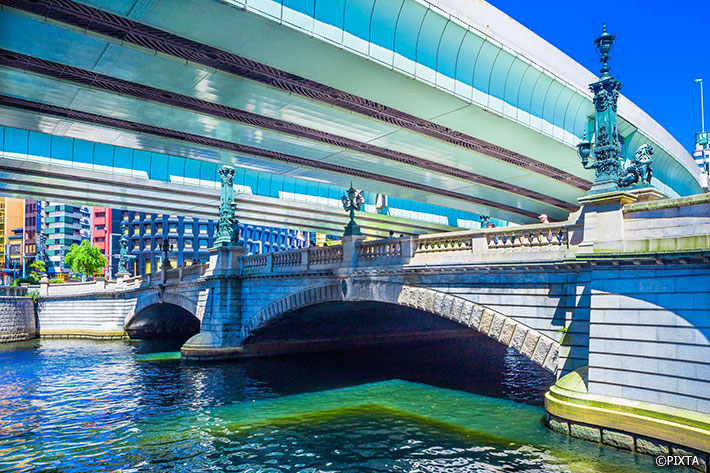
The iconic Nihonbashi Bridge.
日本銀行金融研究所貨幣博物館 Currency Museum: Operated by the Bank of Japan, the Currency Museum is a hidden gem offering insights into the history and culture of Japanese currency. The museum displays a range of coins and notes, including Japan’s oldest coin, the 富本銭 fuhonsen, dating from the 7th century.
東京株式市場 Tokyo Stock Exchange: As one of the world’s leading financial markets, a visit to the Tokyo Stock Exchange provides a unique perspective on the dynamic world of financial trading. You can visit TSE Arrows, where interactive displays provide insight into the workings of the stock market.
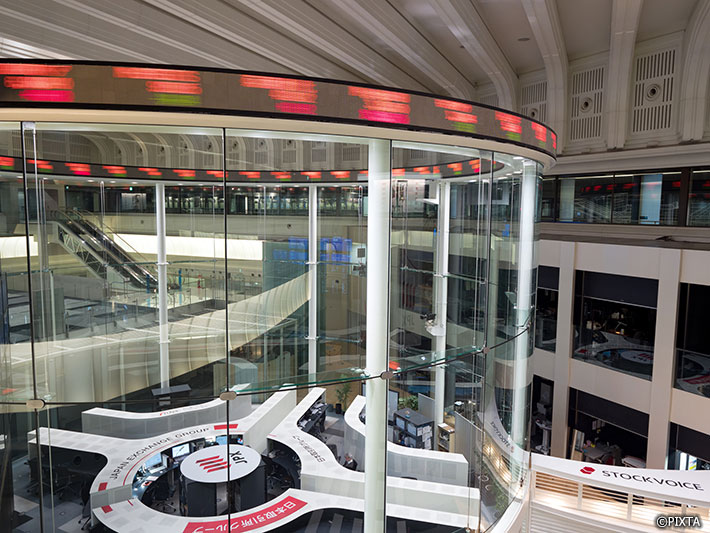
TSE Arrows, inside the Tokyo Stock Exchange Building
Marunouchi
Modern Architecture: Marunouchi is a showcase of modern architecture, with sites like the Marunouchi Building, Tokyo Station, and Tokyo International Forum offering impressive views of Tokyo’s skyline.
皇居 Imperial Palace and Gardens: Adjacent to Marunouchi is the Imperial Palace, the residence of Japan’s Imperial Family. Here, you can explore the scenic East Gardens or enjoy a jog or a bike ride around the palace’s moat, offering a serene escape from the city buzz.
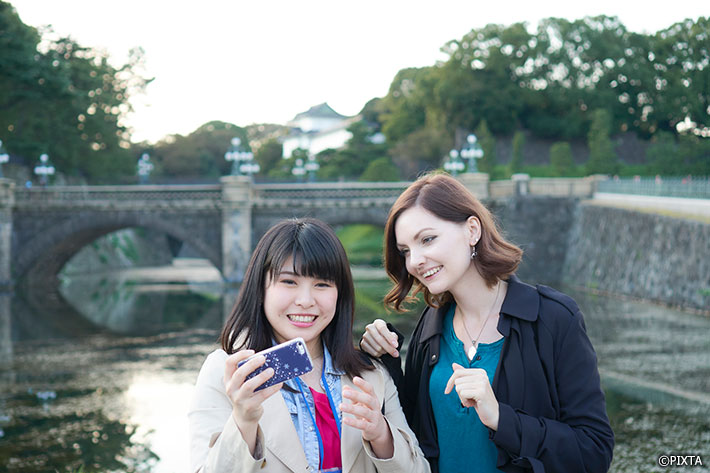
Taking photos in front of the Imperial Palace
Marunouchi Illumination: Every winter, Marunouchi’s streets are bedecked with champagne gold lights, creating a magical atmosphere. The Marunouchi Illumination is one of Tokyo’s most popular winter events and is sure to captivate visitors with its stunning display.
In conclusion, whether you’re a history enthusiast, a food lover, or a shopping addict, Nihonbashi and Marunouchi offer a captivating mix of experiences that vividly illustrate the harmonious blend of tradition and modernity in Tokyo. Each neighborhood has a unique rhythm, with Nihonbashi’s traditional charm offering a sense of the city’s past, and Marunouchi’s contemporary ambiance reflecting Tokyo’s forward-looking spirit. Together, they form an integral part of Tokyo’s identity, providing visitors with enduring memories of this fascinating city.
